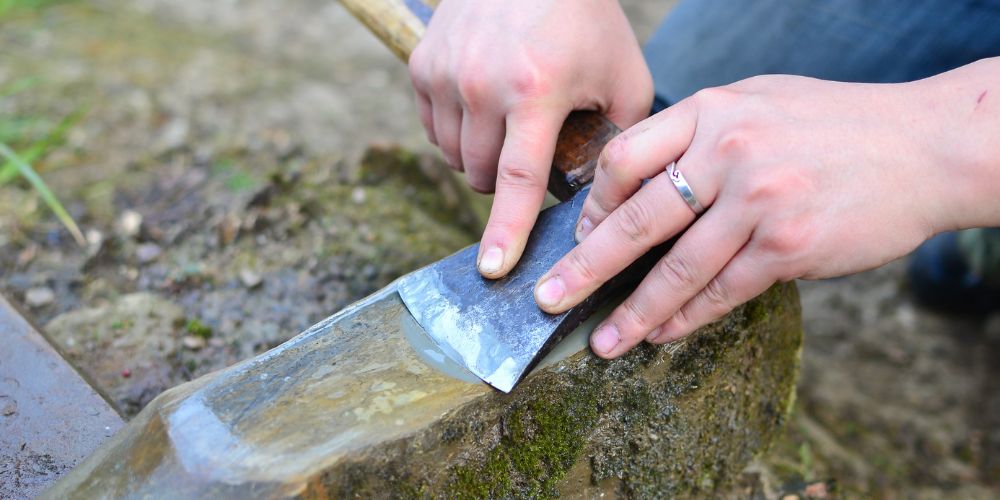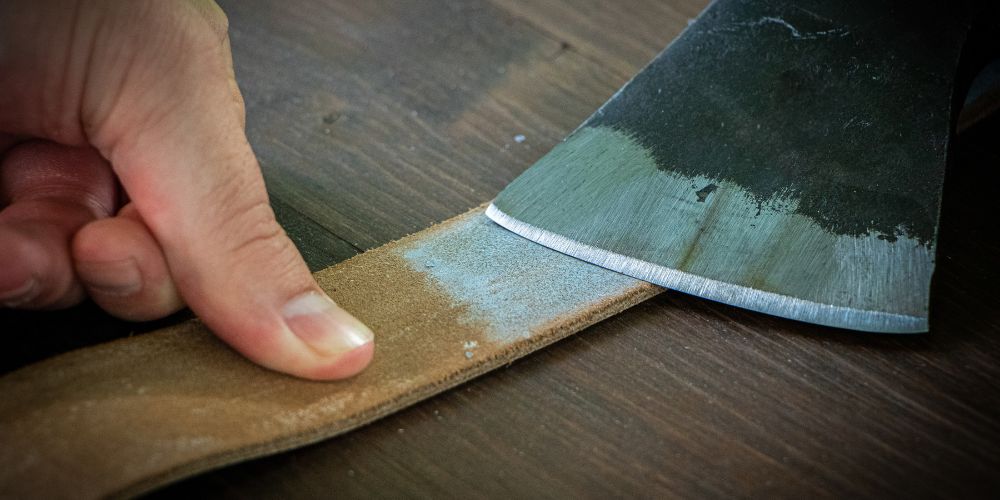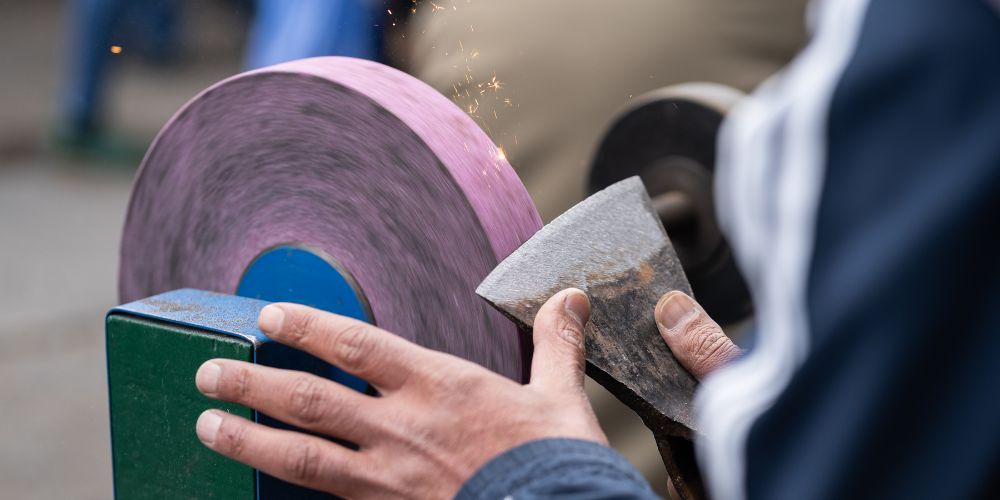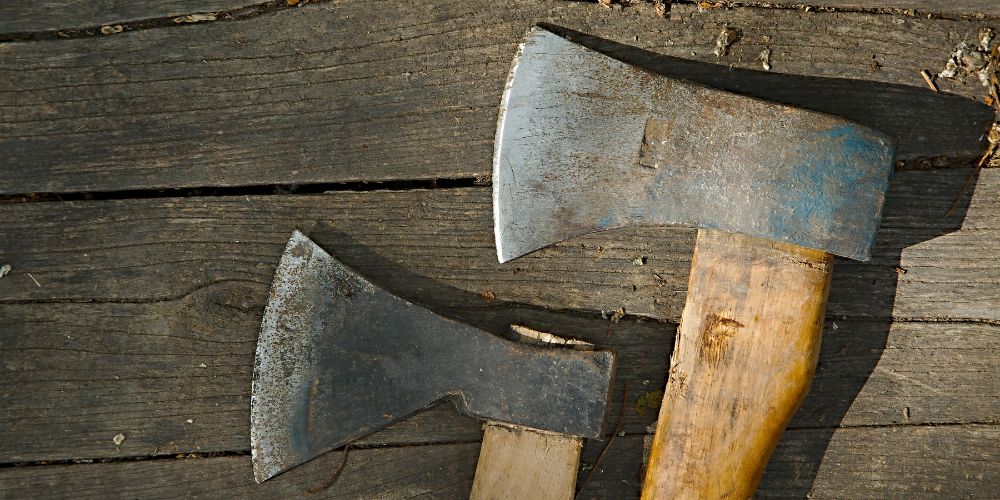Overview
There are a few important things to take into account if you want to learn how to sharpen an axe with a file. You must first select the appropriate file format for the task. A flat file works best for eliminating burrs and nicks, while a round file is better for honing the edge.
Next, you’ll need to clamp or vice-secure the axe to keep it steady. After that, sharpening and preparing your axe for usage just requires a few easy actions.
How Sharpen a Axe with a File
Choose the right type of file
The first step is to select the right type of file for the job. A round file is best for sharpening the edge of the axe, while a flat file is ideal for removing any nicks or burrs. Make sure that the file you choose is the right size to match the curve of the axe blade.
- Select a round file for sharpening the edge and a flat file for removing nicks and burrs.
- Make sure the file is the right size for the curve of the axe blade.
- Consider the coarseness of the file, depending on the condition of the axe blade.

Secure the axe in a vice or clamp
Once you have the right file, you’ll need to secure the axe in a vice or clamp to keep it steady while you work on it. This will ensure that you have full control over the axe and that it doesn’t move around while you’re filing it. Make sure to tighten the vice or clamp firmly, but not so tight that it damages the axe.
- Use a sturdy vice or clamp to keep the axe steady.
- Make sure the axe is securely tightened, but not so tight that it damages the axe.
- Consider using soft jaws on the vice or clamp to protect the axe from damage.
Sharpen the edge with a round file
To sharpen the edge of the axe, you’ll need to use a round file. Hold the file at a 20-degree angle to the blade and file in one direction only, away from your body. Make sure to file evenly across the entire edge of the axe, and check the progress frequently to ensure that you’re not over-filing in any one area.
- Hold the round file at a 20-degree angle to the blade.
- File in one direction only, away from your body.
- Check the progress frequently and file evenly across the entire edge of the axe.
Remove nicks and burrs with a flat file
After you’ve sharpened the edge of the axe, you’ll need to remove any nicks or burrs that may have formed. To do this,use a flat file, holding it perpendicular to the edge of the blade. File the area lightly and evenly, making sure to remove all the nicks and burrs from the blade. Be careful not to file too much or too aggressively, as this can damage the blade.
- Hold the flat file perpendicular to the edge of the blade.
- File the area lightly and evenly, making sure to remove all the nicks and burrs.
- Be careful not to file too much or too aggressively, as this can damage the blade.
Check the sharpness
Once you’ve finished filing, check the sharpness of the blade by running your finger along the edge. It should feel sharp and smooth, without any rough spots or dull areas. If you find that the edge is still dull in some areas, repeat the filing process until the entire edge is uniformly sharp.
- Run your finger along the edge to check for sharpness.
- The edge should feel sharp and smooth, without any rough spots or dull areas.
- If necessary, repeat the filing process until the entire edge is uniformly sharp.

Finish with a honing stone
If you want to achieve an even sharper edge, you can finish by using a honing stone. This will help to polish and refine the edge, making it even sharper and smoother. Hold the stone at a 20-degree angle and run it along the edge of the axe in a circular motion. Repeat this process several times until you’re satisfied with the sharpness of the blade.
Hold the honing stone at a 20-degree angle and run it along the edgeof the axe in a circular motion.
- Repeat the process several times until you’re satisfied with the sharpness of the blade.
- Consider using a lubricant, such as honing oil, to help achieve a smoother finish on the edge.
- Remember to clean the blade thoroughly after using the honing stone.
FAQs
1. How often should I sharpen my axe?
It depends on how often you use your axe and the condition of the blade. If you use your axe regularly, it’s a good idea to sharpen it every few weeks. If you use it less often, you can sharpen it every few months.
2. Can I sharpen my axe with a regular file?
You can use a regular file to sharpen your axe, but it’s not recommended. Axe files are specifically designed for sharpening axes and have the right shape and coarseness for the job.
3. How do I know when my axe is sharp enough?
You can test the sharpness of your axe by running your finger along the edge. If it feels sharp and smooth, without any rough spots or dull areas, it’s sharp enough.
4. How do I maintain the sharpness of my axe?
To maintain the sharpness of your axe, store it properly and avoid using it on hard surfaces like rocks and concrete. Clean it after each use and touch up the edge regularly with a file.
Conclusion
Sharpening an axe with a file is a straightforward process that involves selecting the right file, securing the axe, sharpening the edge with a round file, removing nicks and burrs with a flat file, checking the sharpness, and finishing with a honing stone. It’s important to choose the right file for the job and to securethe axe properly to avoid accidents.
With regular maintenance and touch-ups, you can keep your axe sharp and ready for use whenever you need it. So, if you want to know how to sharpen an axe with a file, follow the steps outlined above and you’ll have a sharp and effective tool in no time.






